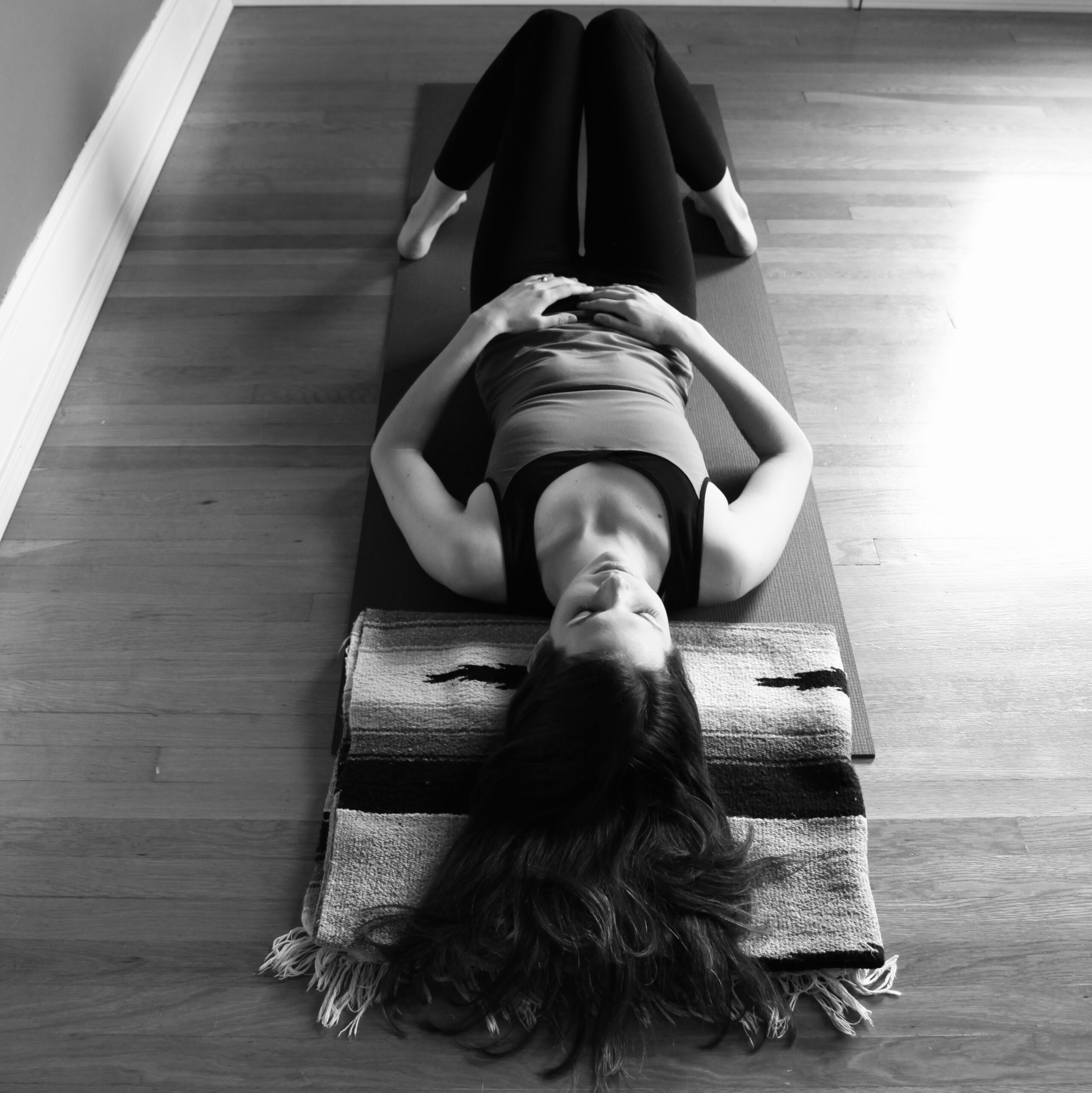
10 Jul What is Restorative Yoga?
The godmother of Restorative yoga
So much of my recent writing has been inspired by a Restorative yoga training I took this year with Judith Hanson-Lasater and Lizzie Lasater, Judith’s daughter. Judith has been teaching for over 40 years. I think of her as the godmother of Restorative yoga. Although there are different approaches to practicing Restorative, if you are using a bunch of props to make yourself perfectly comfortable, your practice is probably inspired by her work.
Restorative FAQ
There is often some confusion about what Restorative yoga is. Isn’t all yoga restorative? Are Yin yoga and Restorative yoga the same thing? These are good questions, and I’ll do my best to answer them. Today, I’ll focus on the first question. In my next blog post, I’ll talk about the differences between Yin and Restorative yoga.
So…
Isn’t all yoga restorative?
If you leave your practice feeling energized, not sapped, I’d say yes! You’ve been restored by your practice. Restorative yoga with a capital R, though, is its own thing. Judith uses this definition…
Restorative yoga, defined
Restorative yoga is the use of props to support the body in positions of comfort and ease to facilitate relaxation and health.
The key components of this?
- Using props to support the body in comfort and ease
- The facilitation of relaxation and health
Let’s break it down further.
Using props to support the body in comfort and ease
Because our bodies all have little discomforts, aches and pains, and spots of tightness or tension, we need something other than our dinky yoga mat to create comfort. We need blankets and bolsters and blocks and sometimes straps. In many poses we’re basically filling in the spaces between the curves of our body and the floor so gravity doesn’t pull us into nothing, it drops us into the comfort of stable, customized support.
The facilitation of relaxation and health
When we minimize physical distractions to comfort and give ourselves the felt sense of full support, our bodies can begin to shift into a nervous system state of relaxation. Our parasympathetic nervous system, “rest and digest,” becomes dominant. Heart rate slows down; breathing slows and deepens; blood flows freely through the abdominal organs nourishing digestion, assimilation and elimination; the immune system has a chance to function optimally; muscles relax; and we begin to remember, on a cellular level, what it feels like to be deeply at ease. Over time, the busy mind follows. Brain waves slow. Thoughts become less chaotic. We arrive in a state between sleep and awake. Restorative yoga is at work.
Stress and rest
Because we live in a culture where stress is part and parcel to most moments in daily life and many of us feel guilty about resting (and have forgotten how to physically rest, anyway), Restorative yoga reawakens us to this innate, internal capacity to repair, heal, and create balance from deep in our bones through to our mental and emotional states. It’s a practice, and like any other, will develop and become easier and more enjoyable over time.
It might not feel peaceful at first
At first, practicing Restorative yoga could feel restless or even agitating. Slowing down to stillness exposes the internal agitation that was already there. Restorative yoga doesn’t create agitation, it gives us space to witness it, perhaps witness what we’ve been avoiding—our persistent feelings of unease. At first, Restorative yoga could feel boring. What am I supposed to be doing laying here for 15 minutes? I could be getting something productive done! I could be looking at my phone. Remember, rest is productive. Learning to rest, to truly deeply rest, is a health-bringing life skill.
With practice, ease will appear
By and by, the time spent in complete support and comfort begins to reveal moments of deeper and deeper ease. Quiet minds settled in bodies without discomfort, experiencing the theta brain wave state, conscious and awake but resting so deeply as to remain undisturbed by the external environment. You experience being settled in the silence and stillness that is always within you. And you finally get it. If you’re anything like me, by this time you’re also hooked to the practice.
But maybe it’s a practice for later
All this Restorative yoga glory aside, it’s not always the right time to dive into such an extended practice of stillness and silence. Although I believe a deep reservoir of resilience is within everyone, accessing it might require shifting through those states of agitation, unease, and restlessness. There is nothing inherently wrong with distraction as a coping skill, especially if you don’t feel ready to “go there.” In these cases, a practice of yoga that involves more movement and less space to yourself might be a better entry point. But don’t write off Restorative yoga forever. Dip your toe in from time to time. There is so much to gain from giving yourself time to practice and receive rest and deep ease.
